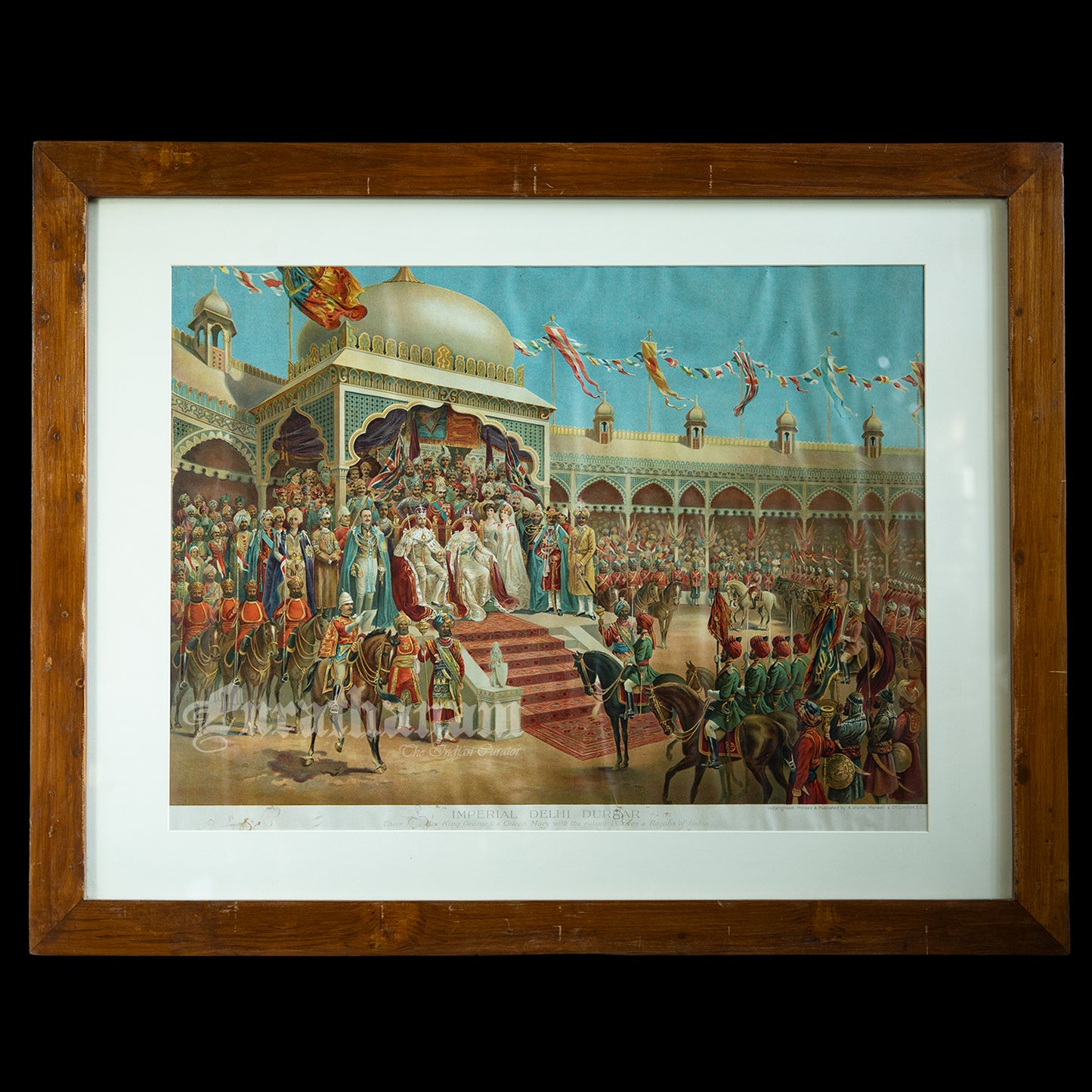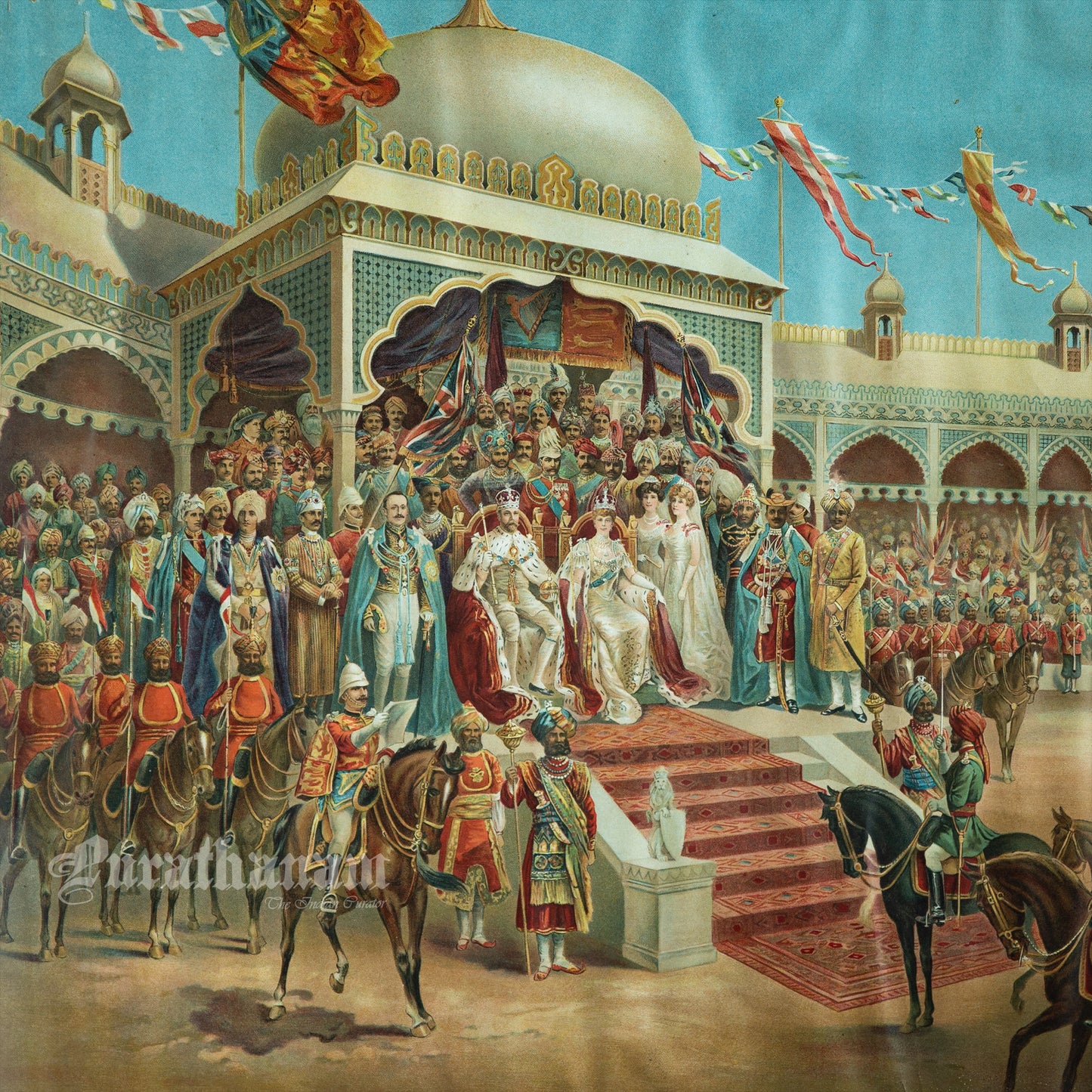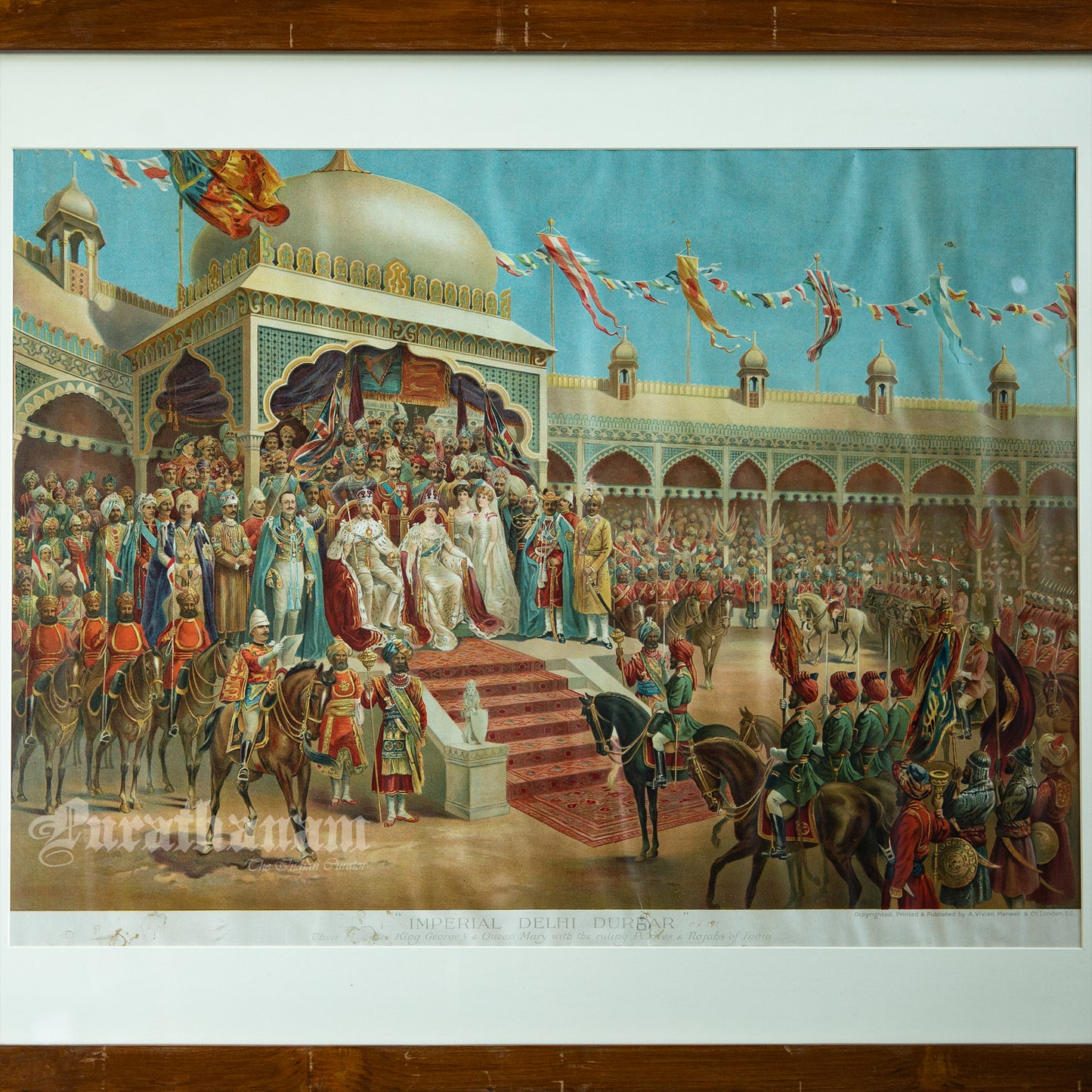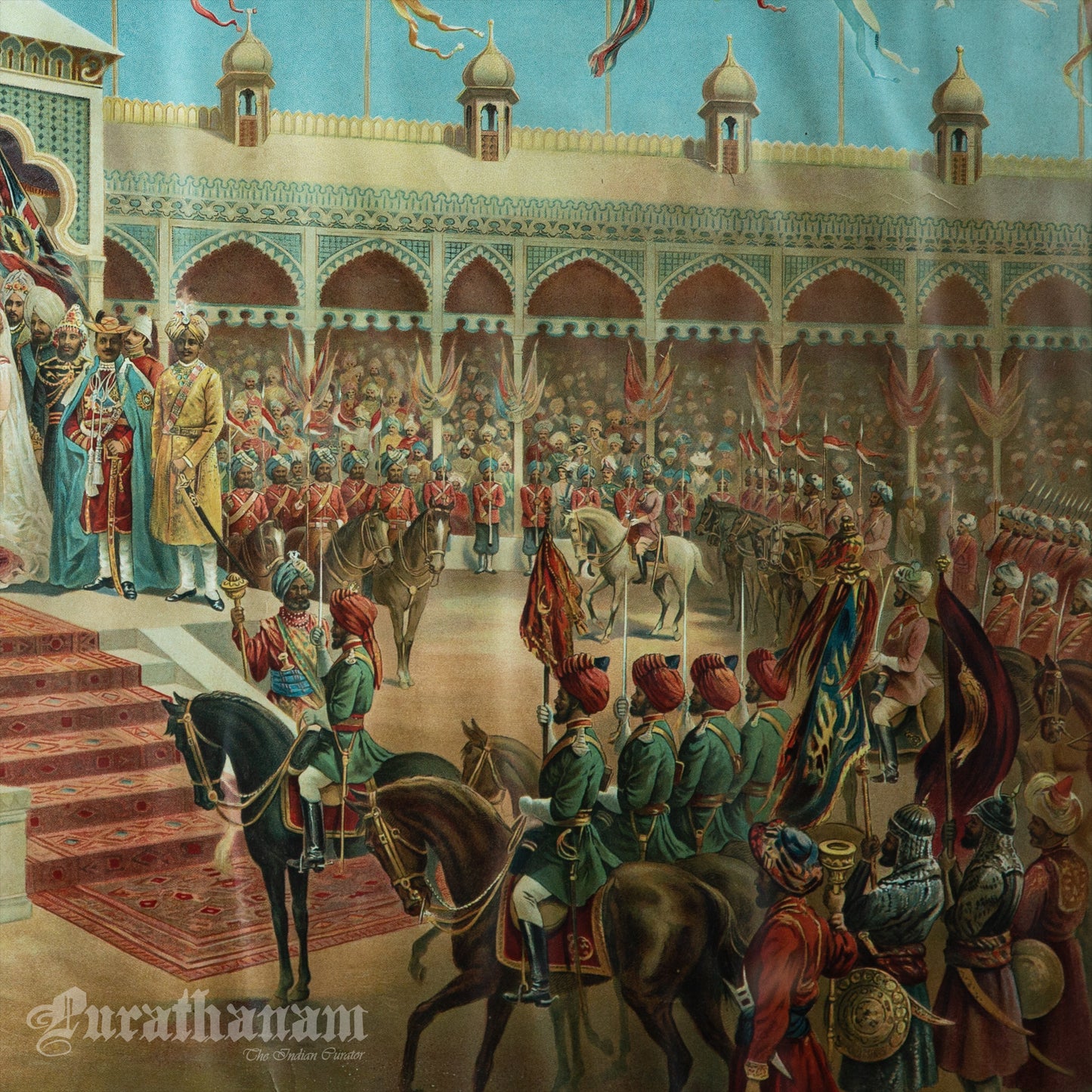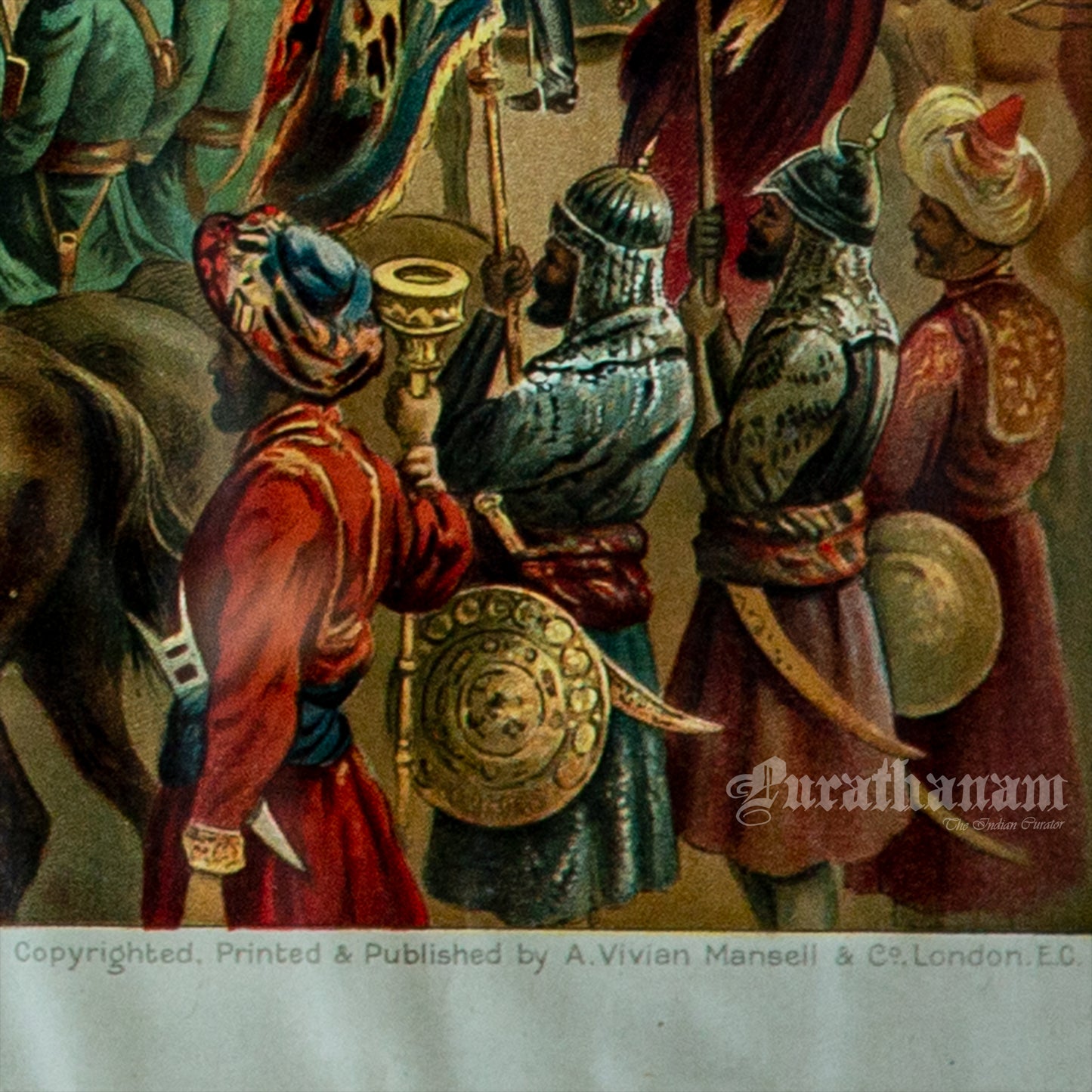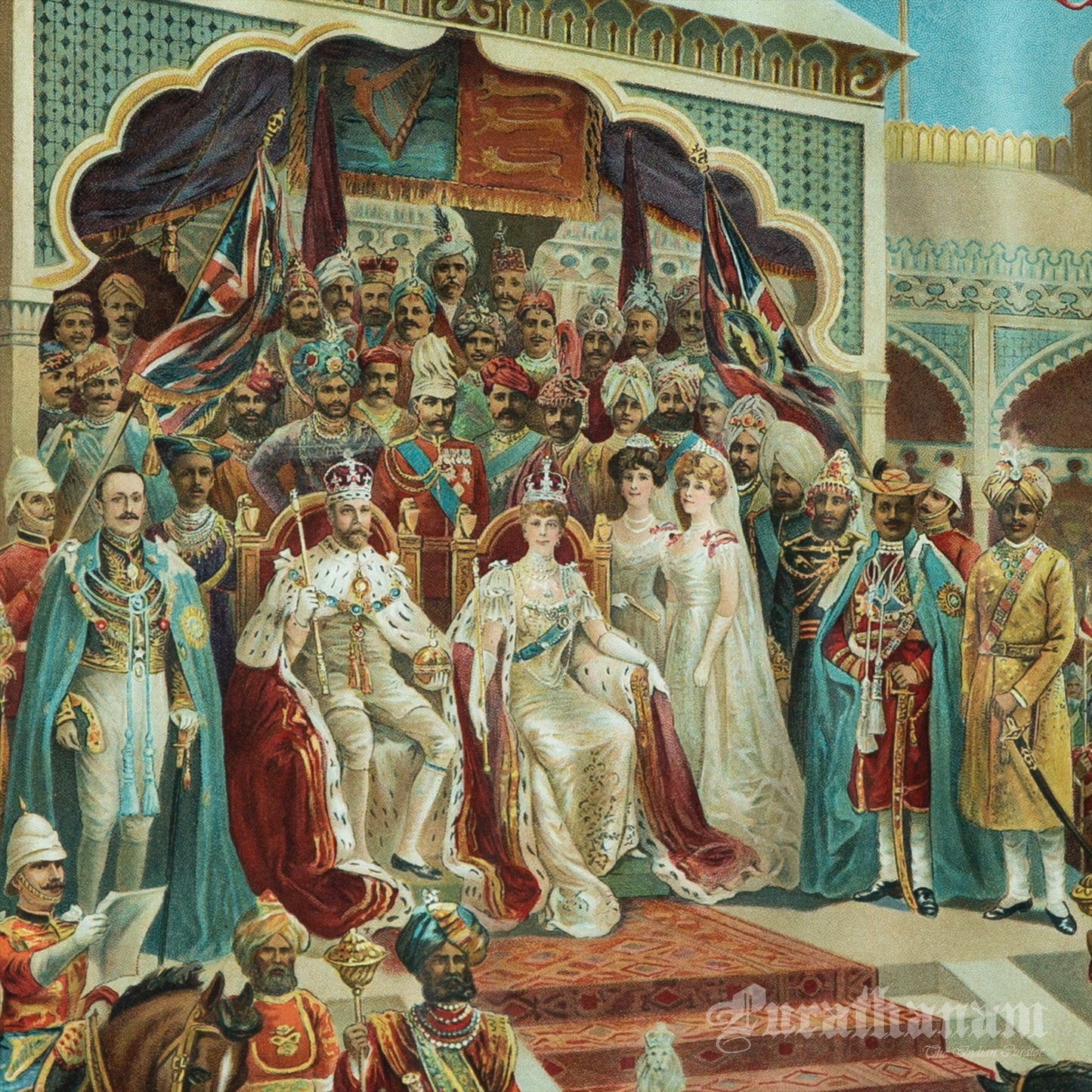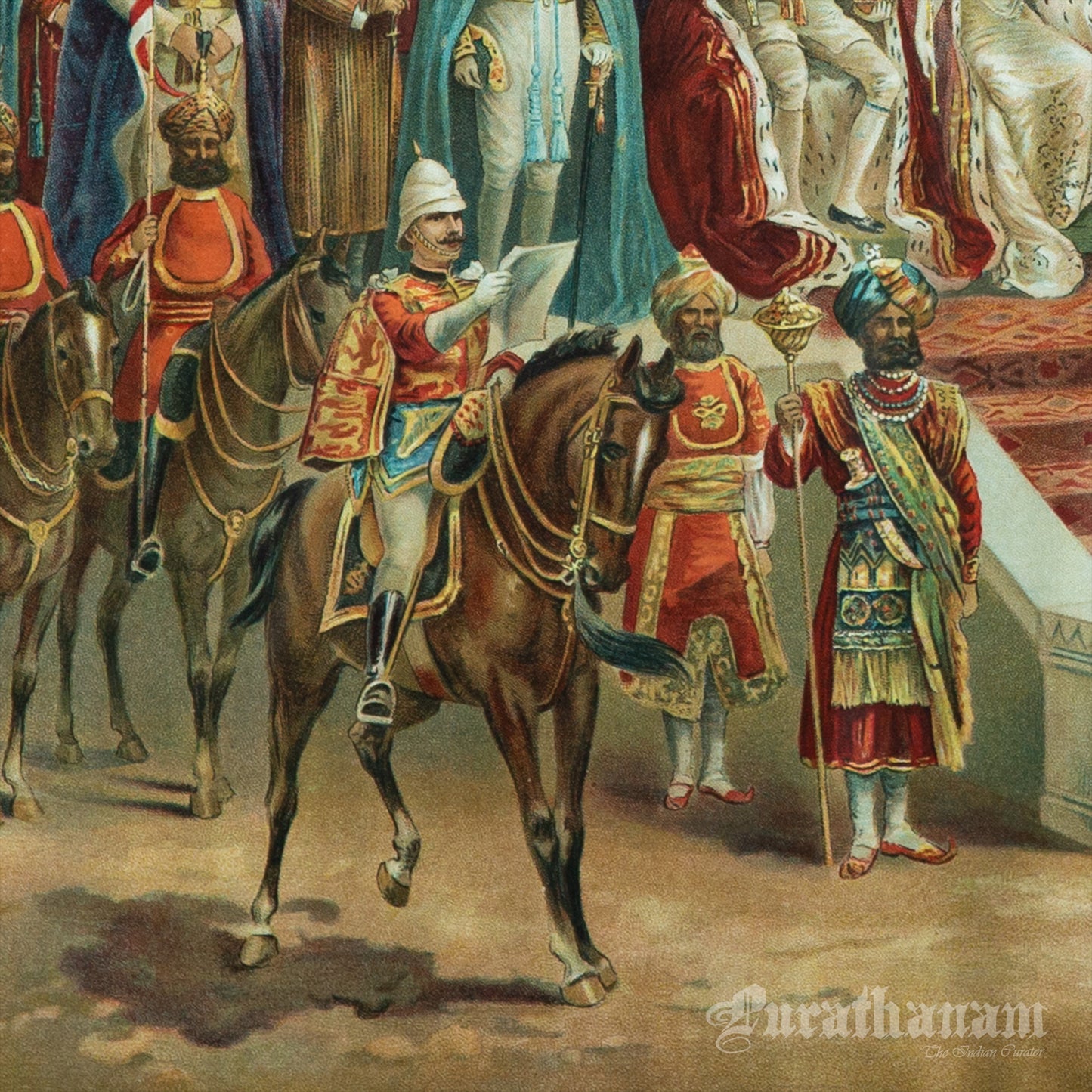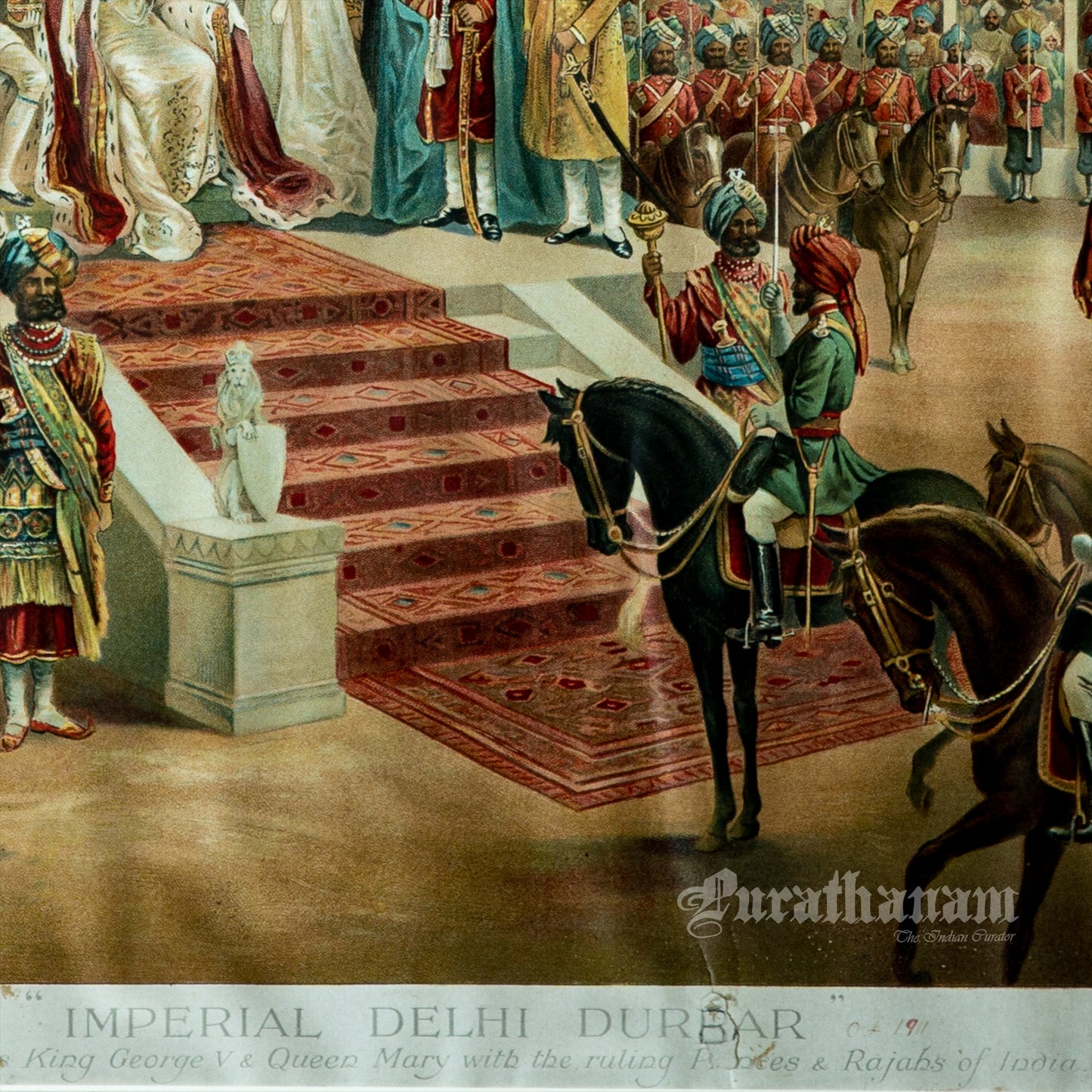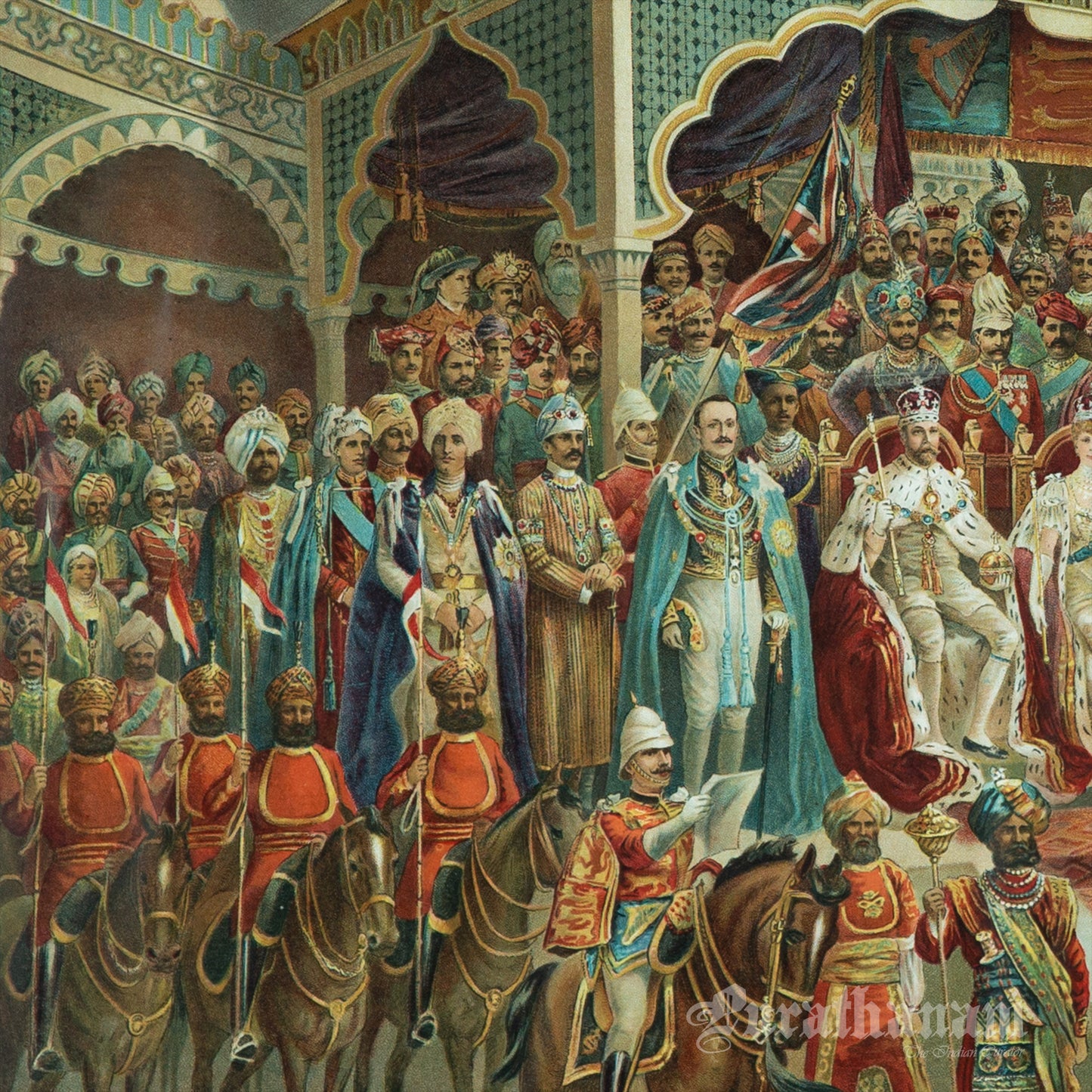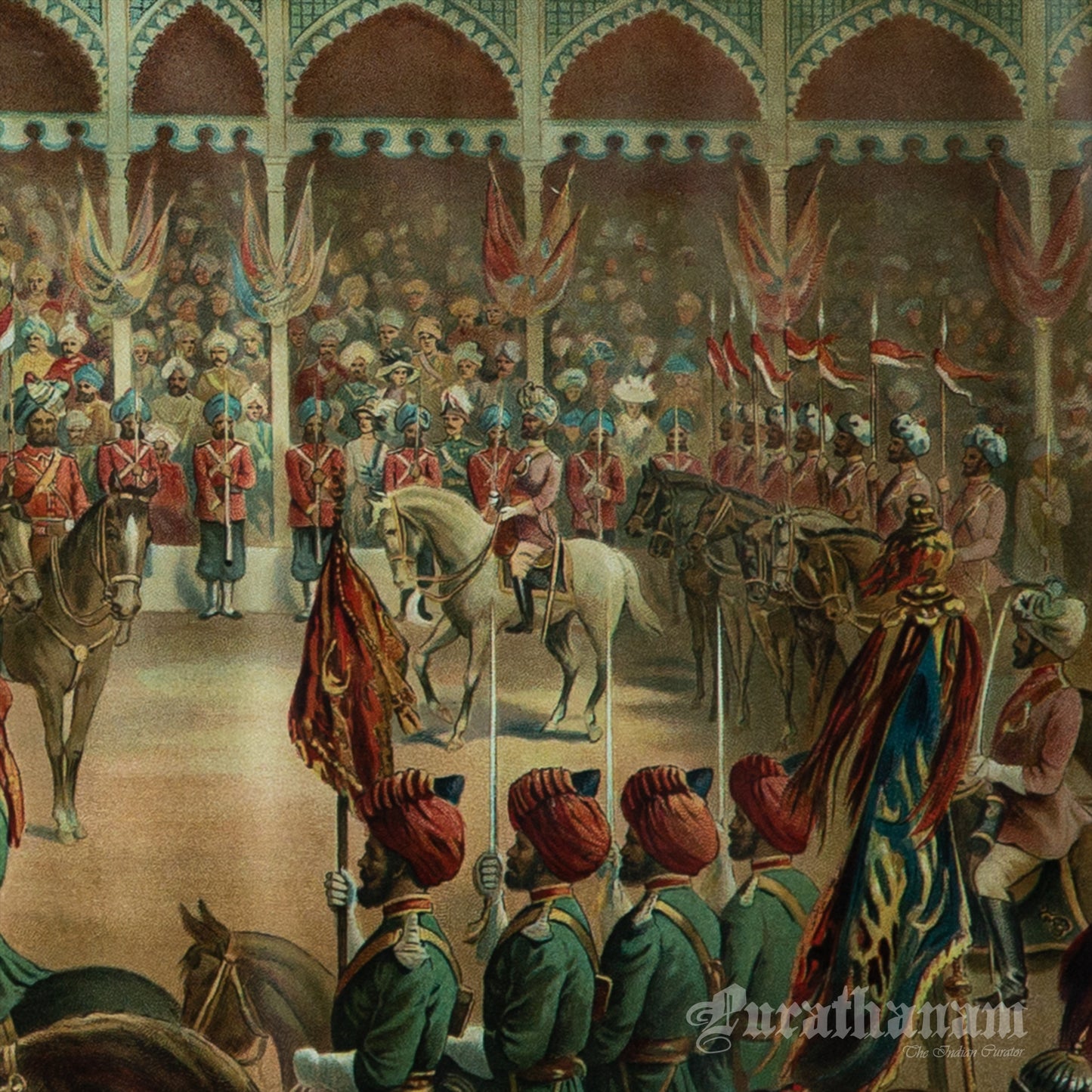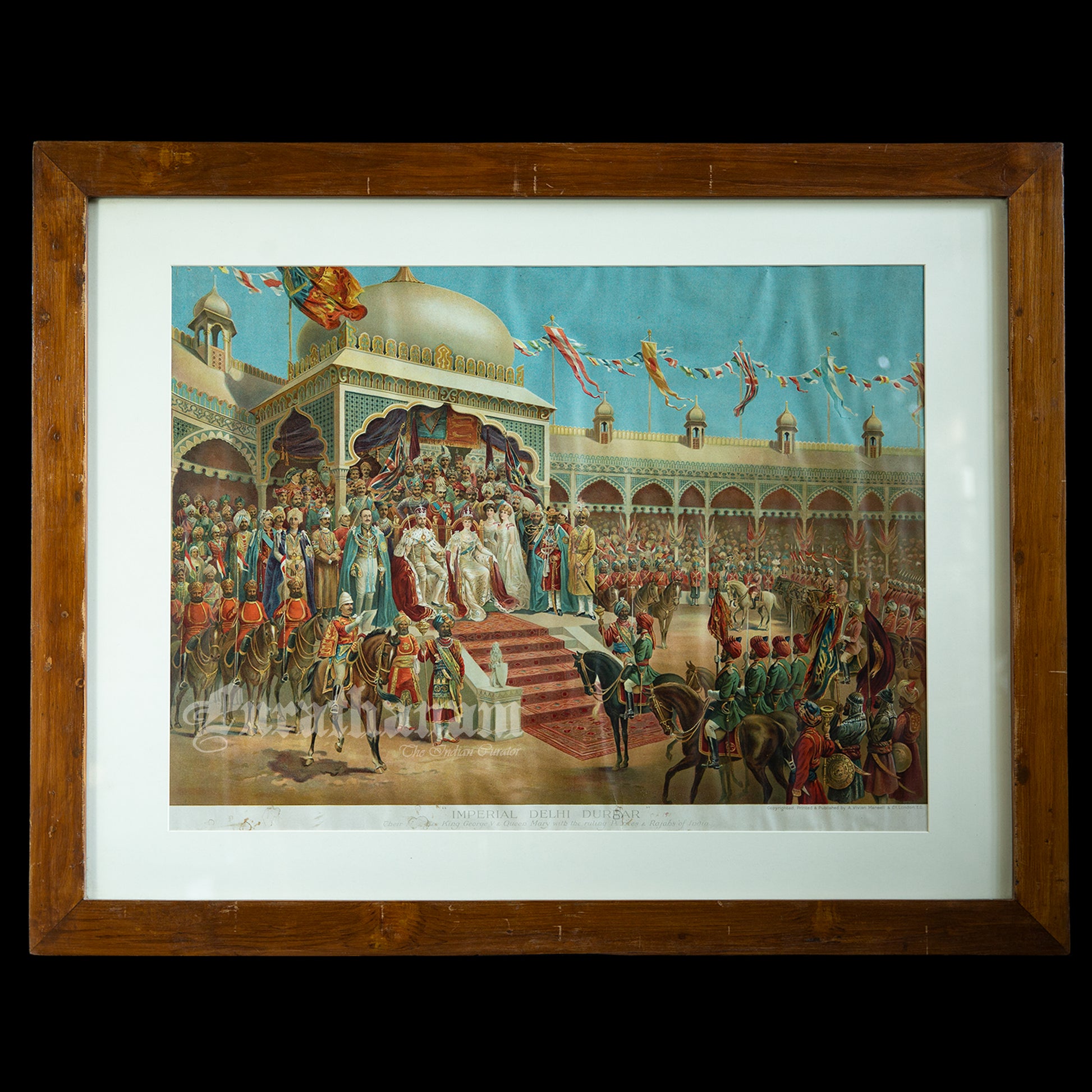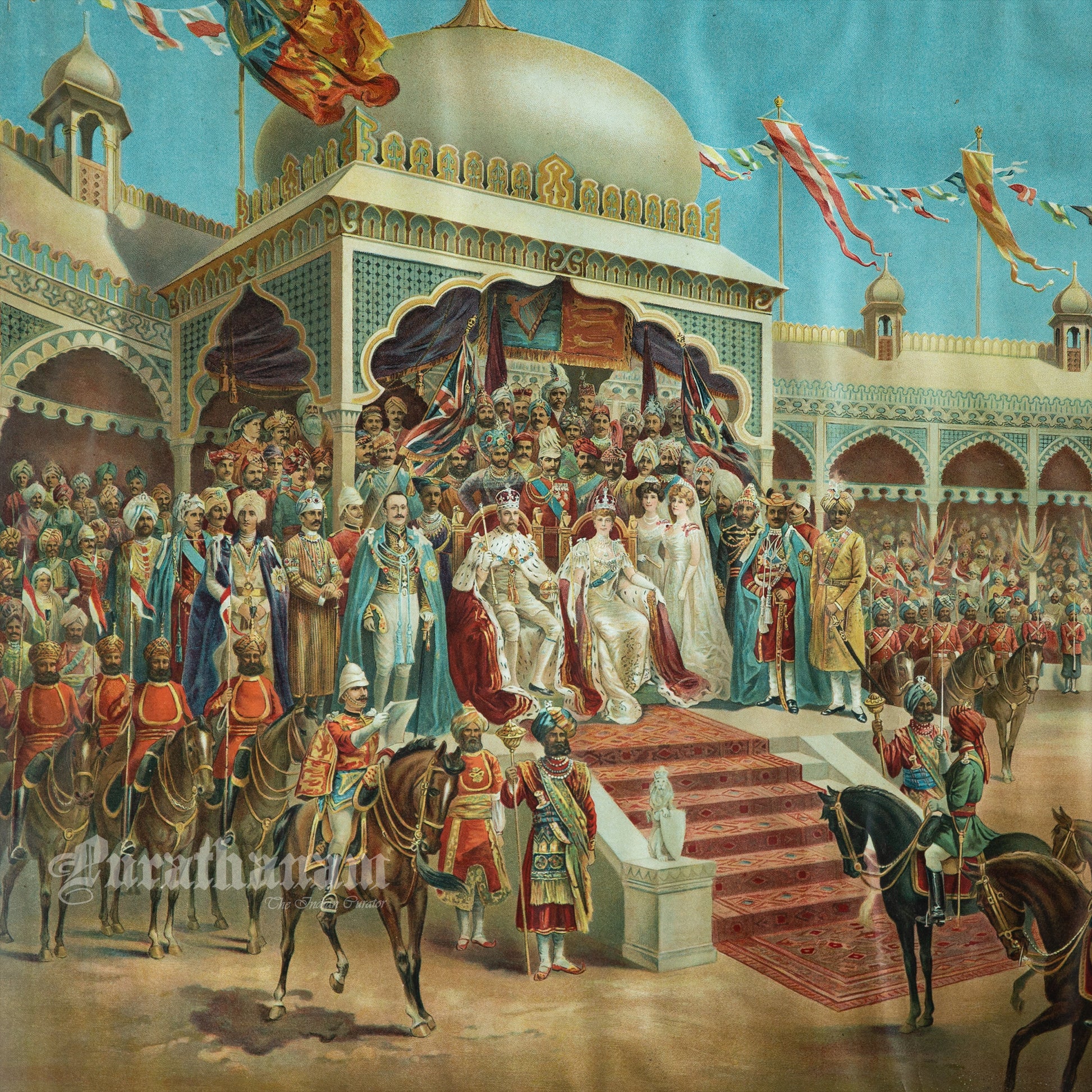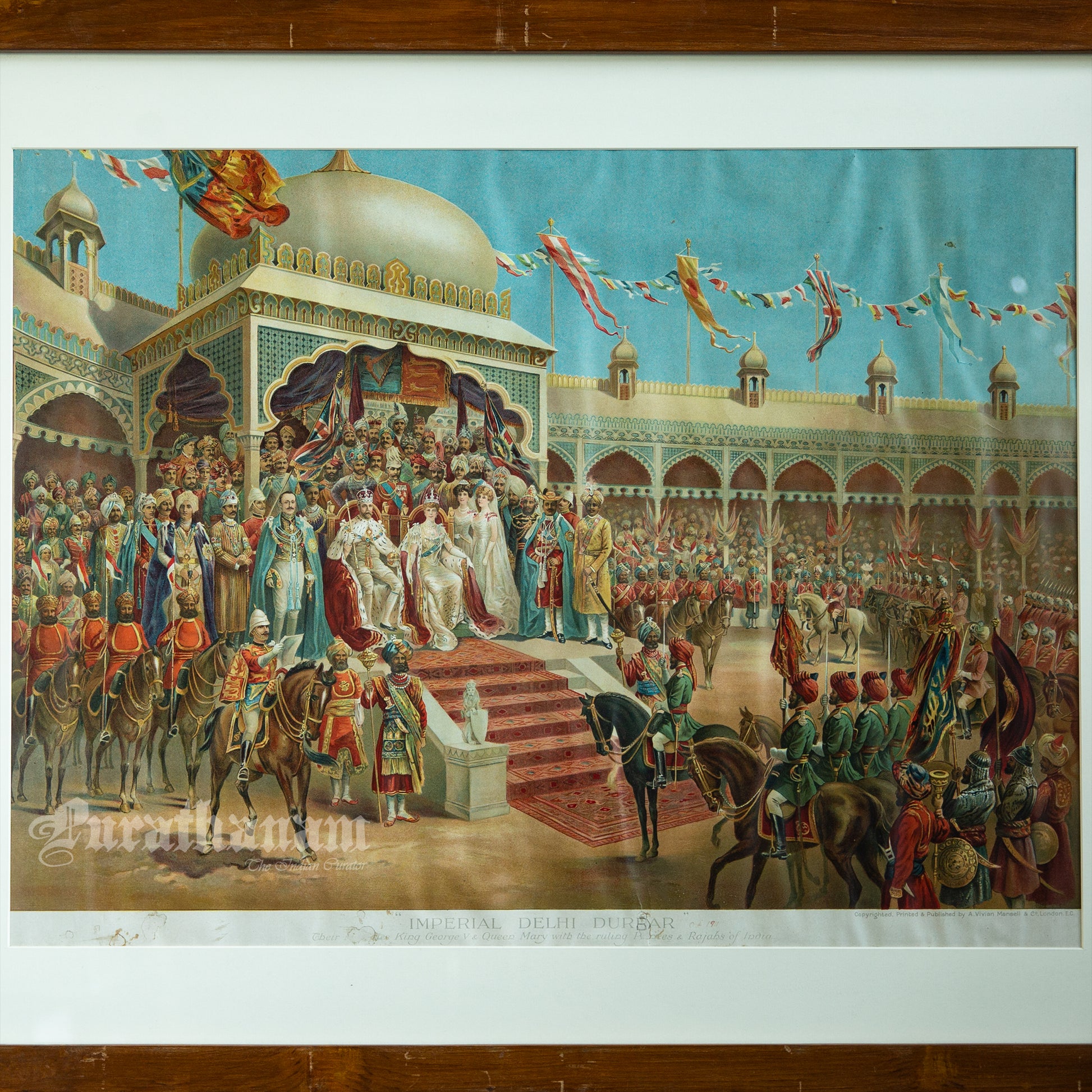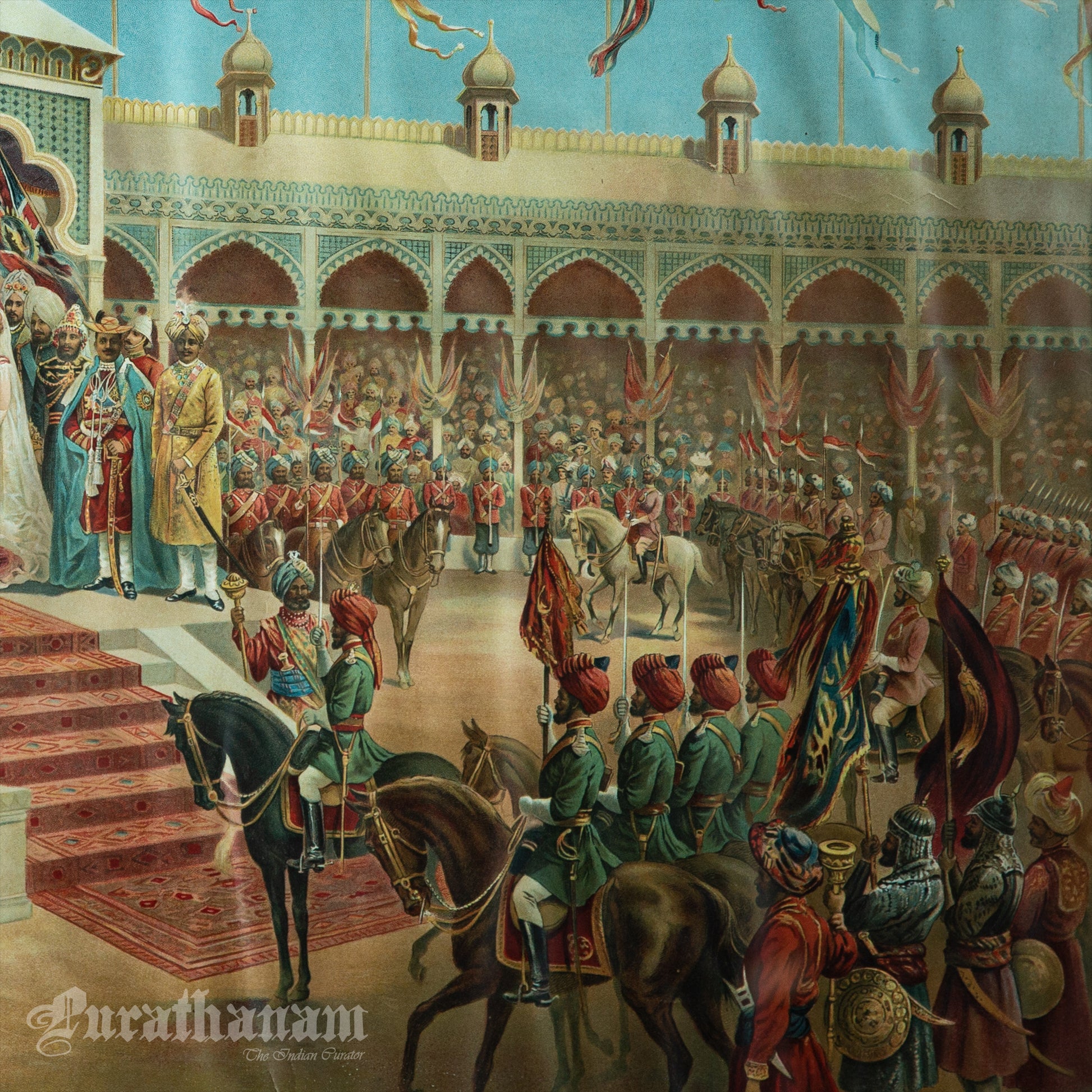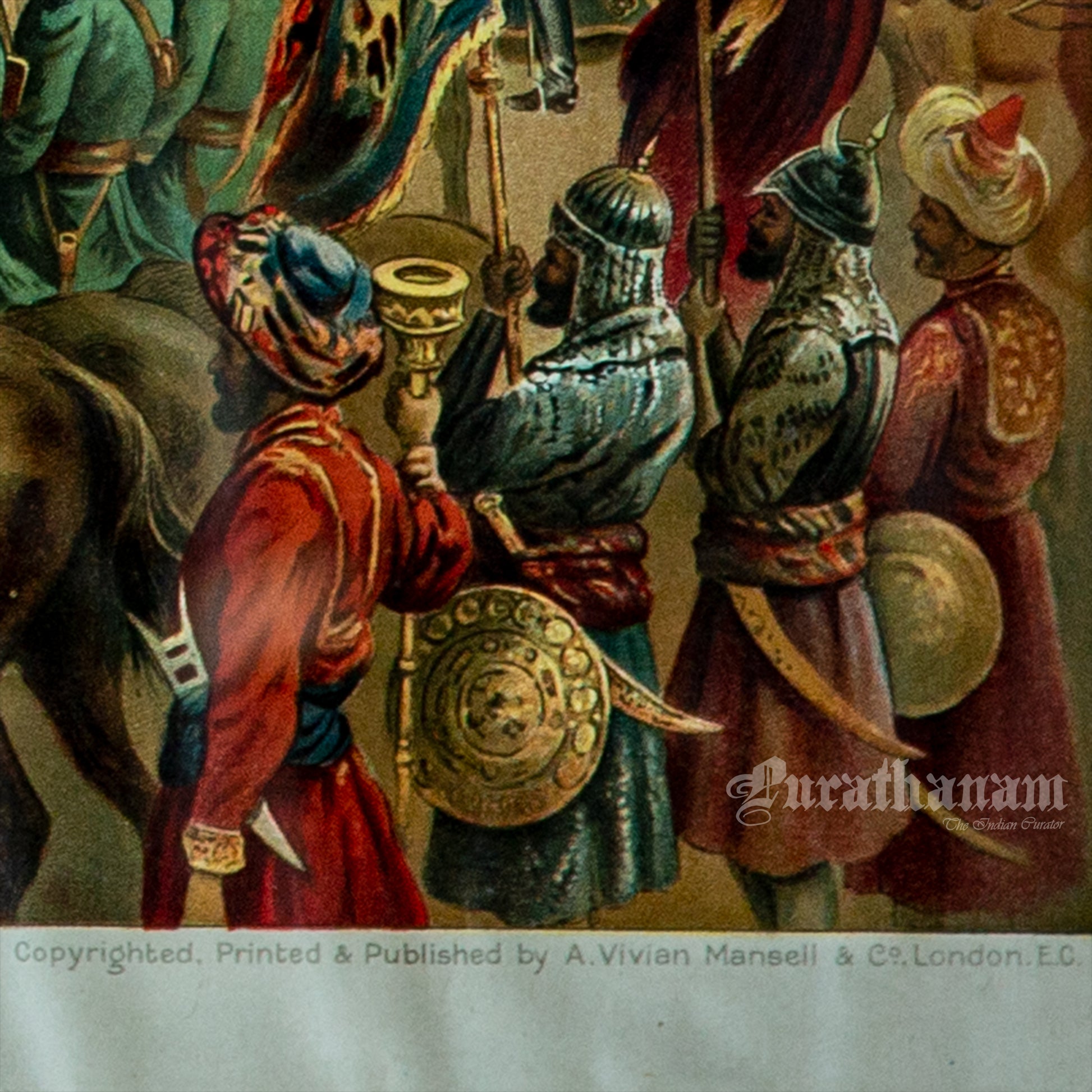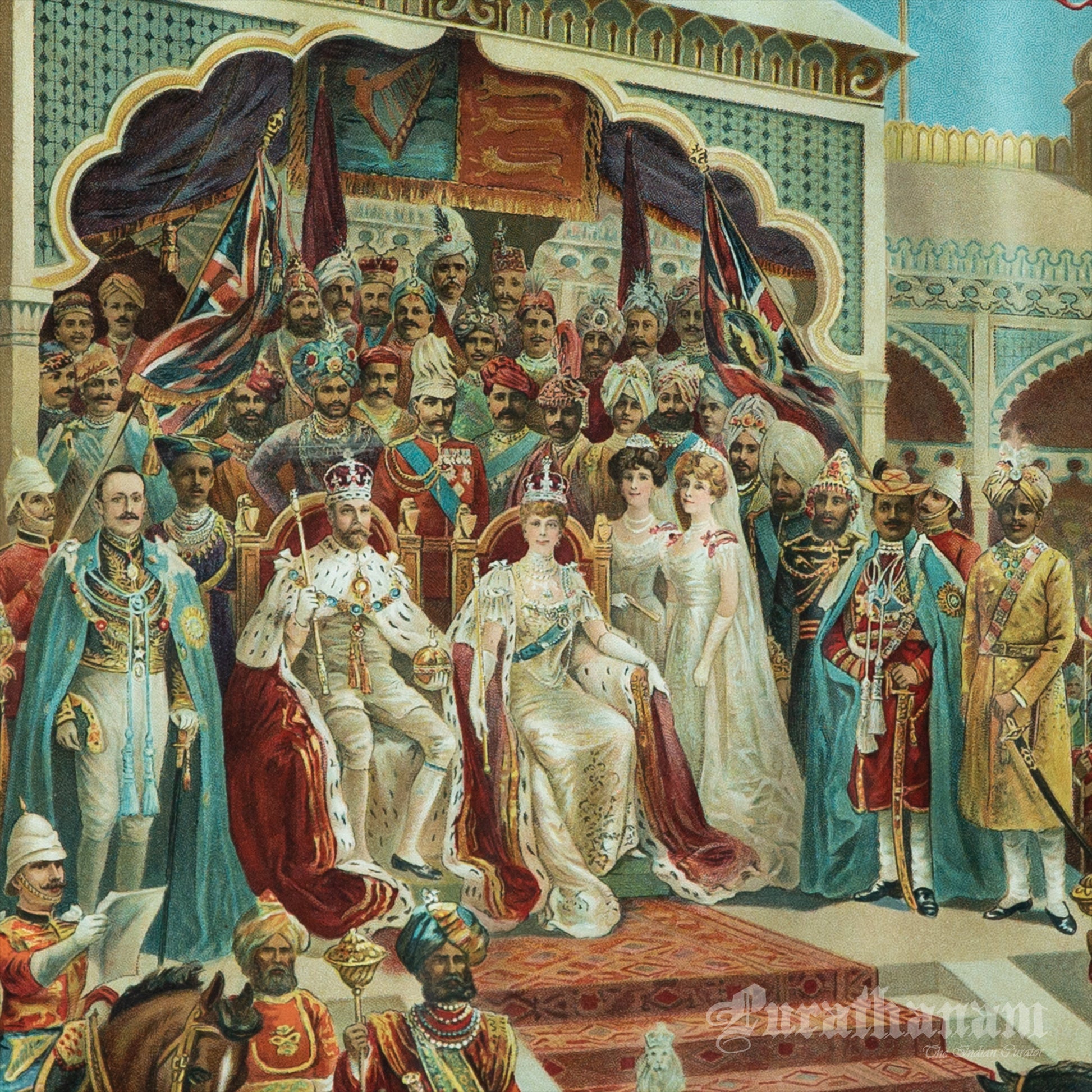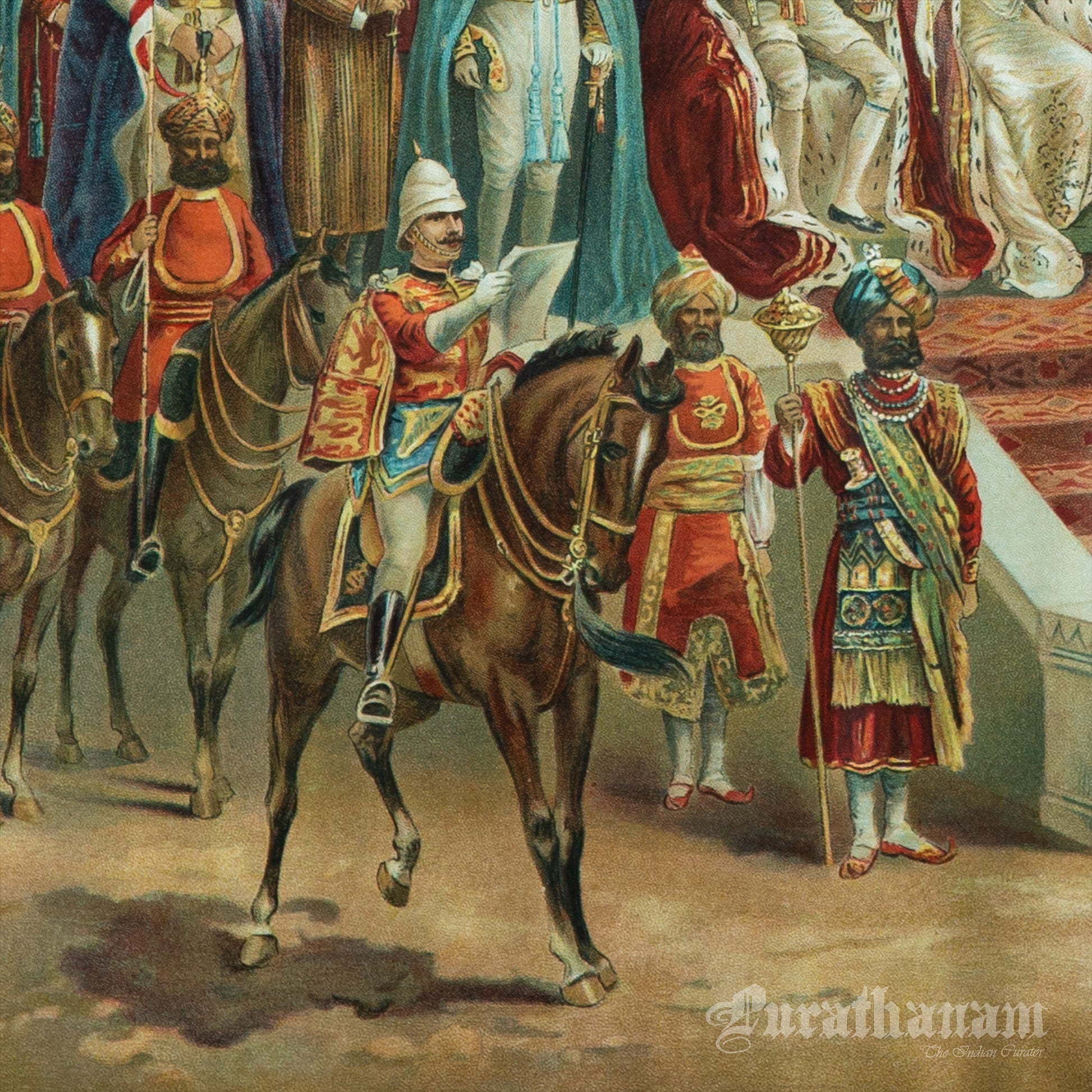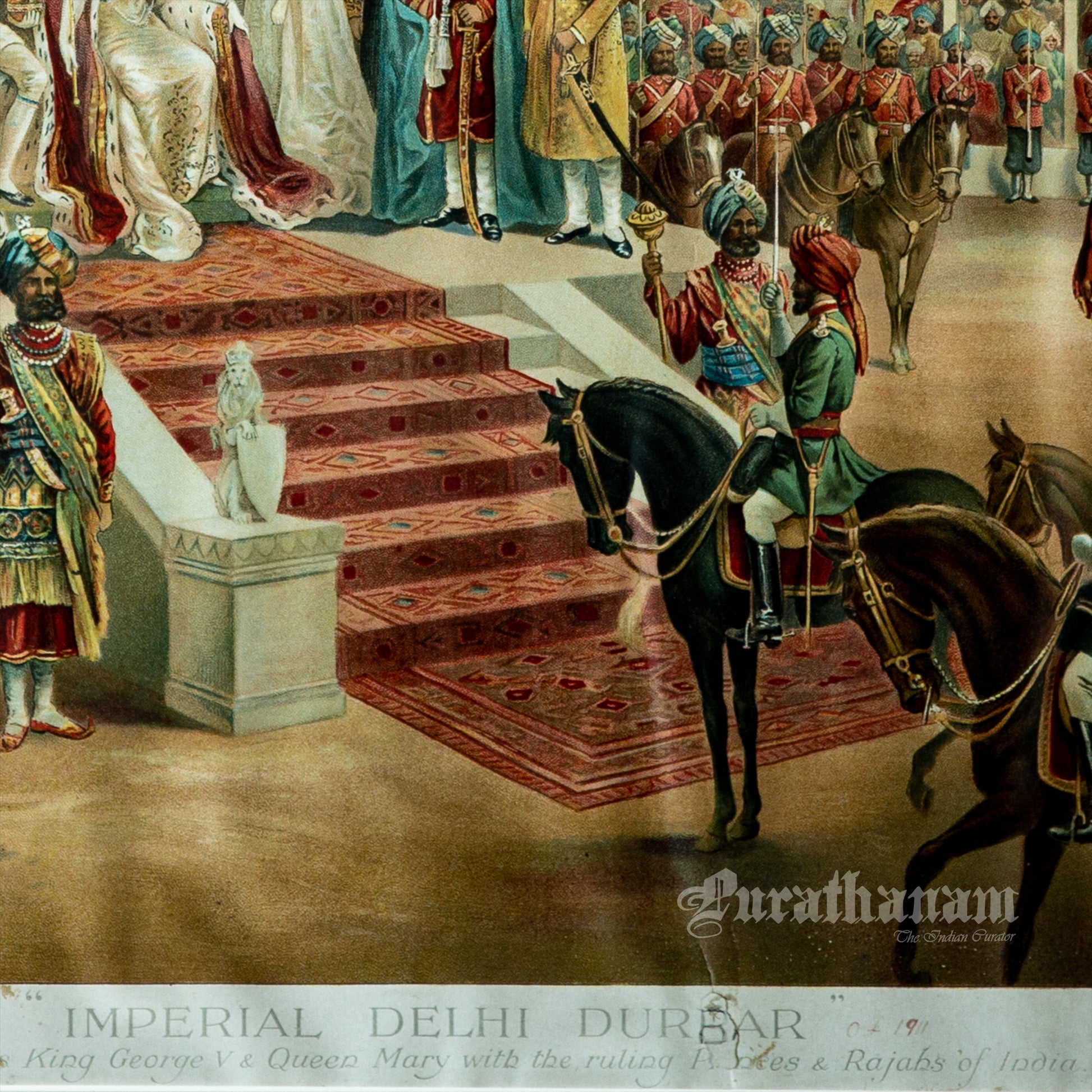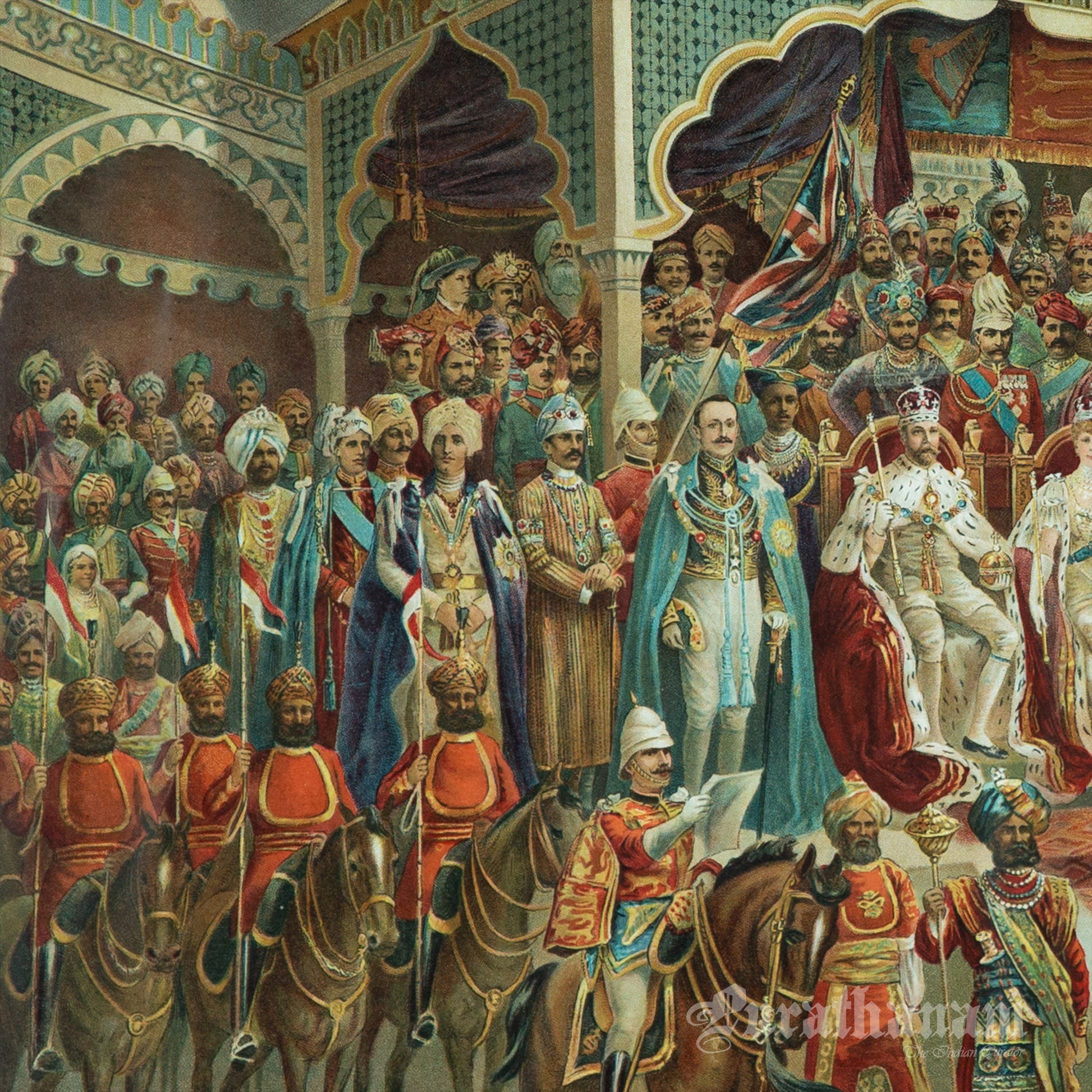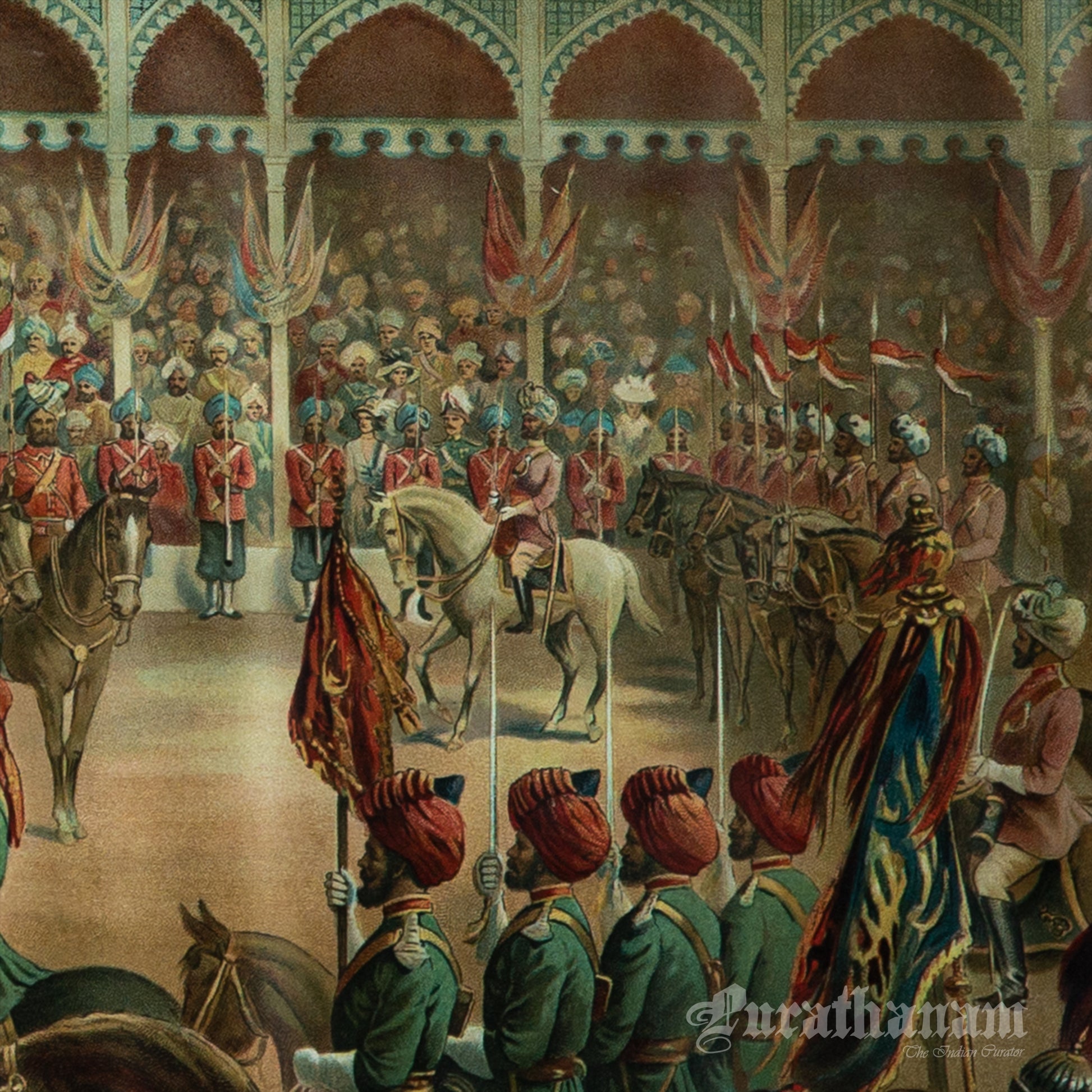Purathanamstore
Delhi Durbar 1911 - Chromolithograph Print, London
Delhi Durbar 1911 - Chromolithograph Print, London
Note : Please inquire to check for product availability.
Description:
Here we have the Chromolithograph print of Imperial Delhi Darbar of the year 1911. The Delhi Darbar is a great historical event, which took place three times in India during the time of British Raj. The first one in 1877, then the 1903 Curzon's Durbar and lastly the 1911 Durbar. Bombay might be First City of India and Madras the oldest of the three Presidency cities but Delhi was rightfully the imperial city. Delhi has a three thousand year history, some of its old buildings boast of a 1200 year vintage and it was the capital of the Mughal empire.
Imperial Delhi Darbar 1911:
The last Delhi Durbar i. e. 1911 was so special because The first two Durbars 1877 and 1903 were not graced by the presence of the Sovereign but 1911 Delhi Durbar was the coronation Durbar of King George V and Queen Mary as Emperor and Empress of India.
The Sovereigns appeared in their Coronation robes and the crown of India. Because Britain’s Imperial Crown jewels are not allowed to be taken out of Great Britain, a new crown and tiara were commissioned for the traveling royals. The work was commissioned to the royal jewellers Garrard & Co. in London.
The resulting Delhi Durbar tiara for Queen Mary was “a complete circlet piece featuring 2,200 diamond scrolls and festoons set in platinum and gold with 10 emerald drops, which makes it particularly tall. In later years the 10 emeralds were removed, and Queen Mary continued to wear alterations of the tiara, each time commissioning Garrard to allow the tiara to have jewel swapping capabilities”.
King George V’s “Crown of India was incorporated 6,100 diamonds, rubies, sapphires and emeralds, and weighed over a kilo. He is believed to have remarked that he felt :
“rather tired after bearing the new crown for 3.5 hours. It hurt my head and is pretty heavy.”
What is a Darbar?
The word “Darbar” was originally derived from the Indo-European language Farsi (Persian). In Persia, “Durbar” means ‘Court of a ruler’ (A Royal court). This term was later adopted by the Mughals during the 15th century and later was adopted by Britishers in late 17th century especially by Lord Wellesley, the fifth Governor General of India between 1798 and 1805. Lord Wellesley started this practice of holding darbar in the Fort William in Kolkata, West Bengal once a year.
To express their loyalty to the British Raj, the kings, Diwans of native states, great zamindars and native officials attended the darbar.
In British usage, the term Darbar stood for a huge public ceremony bringing together colonizer and colonized under the British monarch. Also the Delhi Durbars were organised by the Viceroys to mark the coronations of Emperors or Empresses. So, it was also known as the Coronation Durbars.
-----------------------------------------------------------------------------------
Product Details:
SKUID: PPL0014
Product Name: Imperial Delhi Darbar 1911
Type: ChromoLithograph Print
Print description:
Their Majesties King George & Queen Mary with the ruling Princes and Rajah of India; original coloured lithograph.
Press and Publisher: Printed and published by A. Vivian Mansell & Co., London E.C.
Dimensions:
Frame : 27.8” H x 35” L x .75” D / Print: 20” Hx 26” L
Weight: 7.1 kgs
Age: From 1910s
Frame: Frame is vintage and would have an acrylic protection in place of glass.
-----------------------------------------------------------------------------------
Shipping:
We ship all over India and overseas. For shipments out of India, any custom duty levied will be borne by the customer.
-----------------------------------------------------------------------------------
Return Policy:
No returns or Exchanges
Please do check the dimensions before you buy.
Share
Note: Please inquire to check for product availability.
